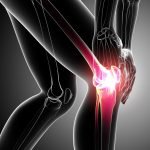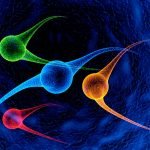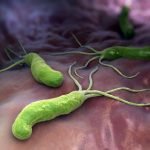Chronic Low Back Pain
Nooshin Darvish, ND and Nancy Tung, RN
Chronic low back pain (LBP) is the most common cause of inactivity in adults under the age of 45. Chronic LBP is defined as pain persisting longer than 12 weeks and involves a complex causal milieu. Up to 27% of the US population suffers from chronic LBP annually. An estimated $100 billion in healthcare costs, loss of productivity, and loss of income burdens the US economy per year.1
For temporary relief of chronic pain, conventional treatment options such as medications (NSAIDS, corticosteroids, muscle relaxants, antidepressants, anti-epileptics, opioids and narcotics) and surgery as well as psychological therapies such as psychotherapy, cognitive behavioral therapy, and hypnotherapy have been used with little to moderate success.2 Alternative therapies such as dietary modification, nutrient therapy, herbs, acupuncture, yoga, physiotherapy, spinal manipulation, traction, laser light therapy, and prolotherapy are available and are often sought out by patients with chronic back pain. At best, scientific evidence currently suggests that in the absence of serious spinal pathology, non-spinal causes, or progressive or severe neurologic deficits, the management of chronic LBP should focus on patient education, self-care, common analgesics, and back exercise.3,4 Other studies suggest a multidisciplinary approach involving behavioral, psychological and psychiatric care for chronic LBP sufferers. These current available treatment options, when applied recurrently, consistently and periodically, are at best managing the pain but are not curative. We propose an additional treatment approach, which not only resolves chronic pain, but also aims to transform patients from a state of physical, mental, psychological, and social pain and debilitation into a state of long-term health and wellness without the need for recurrent and periodic treatment.
Understanding Pain
First, we must accept that pain is part of the human experience and is often subjective. Second, the root cause of pain is complex. Frequently, lingering or chronic pain involves cellular memory of toxins resulting from and associated with response to physical, mental, and psychoemotional trauma. Third, pain is a signal of disharmony and unresolved underlying abnormal physiological, anatomical, biochemical, neurological, emotional and spiritual processes. Therefore, if all the conventional and alternative pain-relief therapies have been attempted without success, perhaps the “voice of pain” has not yet been heard, seen, or touched and if it were to be, then the chronic pain would dissipate permanently.
The question to be answered is where is the root(s) of pain if not in the physical? Is it in the conscious, the subconscious, or at the spiritual level? Is there a “driving force” that haunts people to repeat the same painful experience over and over again? These questions have not yet been answered by science. The current scientific research has focused on the physical, psychological and the consciousness as the location of pain. Anecdotal and clinical experience, however, hint towards a disconnection or miscommunication between unresolved emotional and spiritual trauma and the body as a significant source of chronic pain. If there is dissonance between the mind (as the liaison between the soul and the body) and the body, or the soul and the mind, then pain is produced as a signal of that dissonance. Once the dissonance is resolved and harmony is created between the mind, body and the soul, chronic pain dissipates. Therefore, clinical and personal experience points to a higher consciousness, a subconscious and a connectivity to the greater whole, which when in peace and harmony results in pain resolution.
Ultimately, a comprehensive treatment approach to chronic pain must address the sources of pain at all levels: physical, emotional, mental, subconscious, energetic, and spiritual. Only when all levels are addressed will there be lasting relief from chronic and debilitating pain. Soul Touch TherapyTM attempts to harmonize the mind, the body and the soul. The result is to create a unifying force between the physical, electromagnetic, emotional, mental, subconsciousness, and the soul, which ultimately leads to long-term pain relief.
What Is Soul Touch Therapy?
A multidimensional therapy involving energy medicine combined with the application of physical touch, spinal manipulation, individualized acupuncture point application, electromagnetic field connection, the acknowledgement of current and past physical, energetic, and psychological pain along with meditation for self and the souls of one’s biological ancestors makes up the basis for Soul Touch TherapyTM. The therapy involves the soul and physical touch of the therapist connecting with and guiding the soul and body of the patient. The practitioner acts as a ‘hollow reed.’ There is a soul-to-soul and a physical-to-physical connection between the therapist and the patient, thus, the name Soul Touch Therapy. During or shortly after a treatment session, toxins, once engraved in the cellular memory, are discharged. The patient may cry, experience physical trembling or chills, release a sigh, relax muscles, or simply fall asleep during the session or shortly thereafter. Oftentimes at the end of a treatment session, the patient experiences a sense of inner spiritual movement towards a state of grace or prayer. A sense of connectedness, wellness and confidence arises within the patient escorting chronic pain relief and courage to move forward from a state of stagnation towards the transformation of his/her physical, social, mental and emotional state of well-being.
Case Study
A 57-year-old male initially complains of chronic low back pain, headache and hypertension. In 1992, he had a work-related injury, which lead to surgical fusion of L4-L5. Since then, he has been in constant chronic low back pain of 7/10 on the pain scale limiting him from exercise and reducing his quality of life. He has been disabled from work for 18 years and continues to have constant pain. He is depressed, has been a stay-home dad as a result of the injury and generally feels unsatisfied with his life. He was physically abused as a child and was addicted to recreational drugs as a young adult. He manages his pain by receiving weekly acupuncture treatments and taking 40 mg of time-release hydrocodone 6 times per day for the past 14 years. During the first office call, significant initial objectives included: BP162/90, wt. 189, P 80, flat affect, tenderness of L5-S1, L2-3 spinal processes with palpation along with limited and painful lumbosacral flexion and extension. Paralumbar musculature was hypertonic and mildly edematous. L5-S1 hypermobility was found along with that of bilateral SI joints. Lumbar X-ray imaging indicated mild-moderate DDD of the lumbar spine and L4-L5 fusion. Lumbar MRI was otherwise negative. Labs showed elevated IgE to casein and egg yolk and elevated IgG to wheat and gluten. Morning cortisol levels, DHEA-S and bioavailable testosterone were low. Diagnosis included: Hypermobility syndrome, DDD, lumbago, hydrocodone addiction, PTSD, adrenal dysfunction, food allergies, and andropause. Initial treatment began with dietary modification with gluten, eggs, dairy, sugar, and alcohol elimination to reduce inflammation; biofeedback therapy to reduce pain and addictive behavior; 2 sessions of prolotherapy one month apart were performed for the hypermobility of the pelvis. Homeopathic Discus compositum, Siliphos, Homeopathic testosterone and 15 mg DHEA sL were prescribed. Constitutional homeopathic remedy Natrum Sulph 200k was prescribed 6 weeks after the initial treatment. On follow-up visit 2½ months after the initial visit, patient reported LBP to be 3/10. He then began actively working to wean off hydrocodone. Six months later, he had been able to reduce the hydrocodone to TID but was having recurrent severe headaches, fatigue, and irritability as withdrawal symptoms. He was still experiencing some LBP. His adrenal and testosterone hormone levels were now in the normal range. Soul Touch TherapyTM was instigated for 3 months to resolve any past trauma and conflict related to his LBP and the hydrocodone addiction. His issues regarding his painful childhood, personal identity, his suppressed anger with his mother, and the dysfunctional relationship with his mother and father had prevented him from attending his mother’s funeral. He was angry and resentful at his dad and at himself. Through Soul Touch Therapy, he connected with the soul of his deceased mother and father and released his father’s guilt and sadness about the childhood abuse. He also came to recognize that the physical and emotional abuse was a recurrent theme for 5 generations on his father’s side and that his father and grandfathers were just as much victims of abuse as he had been. He prayed and learned to forgive himself, his father and his grandfathers. He made peace with his mother. He now felt connected and unified with his parents and grandparents. His body felt a sense of harmony with the voice of his soul and mind. He is now completely off all pain medications and acupuncture treatments, and is experiencing no back pain or headaches. His blood pressure is 122/72. He has started a new business with his wife, which is flourishing nationally and internationally. He is happy and content with his life and has a sparkle back in his eyes. He feels like his life has been given back to him again. He is no longer in need of any type of treatment for his back.
 Nooshin K. Darvish, ND is the founder and medical director of Holistique Medical Center, initially launched as the first and only naturopathic clinic at one of Washington’s largest hospitals, Overlake Hospital in Bellevue. She is a Bastyr graduate of 1995, and a former chief resident and adjunct faculty of Bastyr University. Dr. Darvish has completed her fellowship in Integrative Cancer Therapies and is completing a second fellowship in Anti-aging Medicine. She specializes in chronic disease, cancer and anti-aging medicine using a multidisciplinary approach to healing. She serves on a couple of medical boards, is a nutraceutical product consultant, and is the medical advisor to The Dr. Pat Show. She is the co-developer of Soul Touch TherapyTM. Dr. Darvish can be found practicing, healing, writing, lecturing or enjoying being with her husband and three daughters.
Nooshin K. Darvish, ND is the founder and medical director of Holistique Medical Center, initially launched as the first and only naturopathic clinic at one of Washington’s largest hospitals, Overlake Hospital in Bellevue. She is a Bastyr graduate of 1995, and a former chief resident and adjunct faculty of Bastyr University. Dr. Darvish has completed her fellowship in Integrative Cancer Therapies and is completing a second fellowship in Anti-aging Medicine. She specializes in chronic disease, cancer and anti-aging medicine using a multidisciplinary approach to healing. She serves on a couple of medical boards, is a nutraceutical product consultant, and is the medical advisor to The Dr. Pat Show. She is the co-developer of Soul Touch TherapyTM. Dr. Darvish can be found practicing, healing, writing, lecturing or enjoying being with her husband and three daughters.
Nancy Tung, RN is the co-developer of Soul Touch TherapyTM, a gifted Jin Shin Do practitioner, and a Qi Gong master. She has practiced as a registered nurse for the past 30 years. Her clinical expertise initially was in surgical and critical pediatric hospital care. Ten years ago, after being diagnosed with breast cancer, she found healing in naturopathic and energy medicine and has since been involved in energy healing, and currently serves as a naturopathic medical nurse.
References
- American Pain Foundation Web site. http://www.painfoundation.org/. Accessed May 10, 2010.
- Broekmans S, Dobbels F, Milisen K, Morlion B, Vanderschueren S. Pharmacologic pain treatment in a multidisciplinary pain center: do patients adhere to the prescription of the physician? Clin J Pain. 2010;26(2):81-86.
- Korovessis P, Repantis T, Baikousis A. Factors affecting low back pain in adolescents . J Spinal Disord Tech. [published online ahead of print January 11, 2010]
- Mayer JM, Haldeman S, Tricco AC, Dagenais S. Management of chronic low back pain in active individuals. Curr Sports Med Rep. 2010;9(1):60-66.










